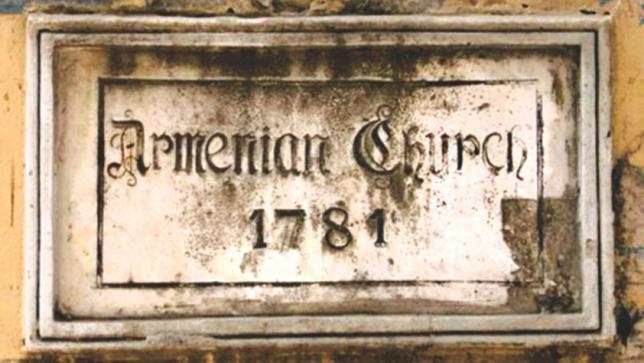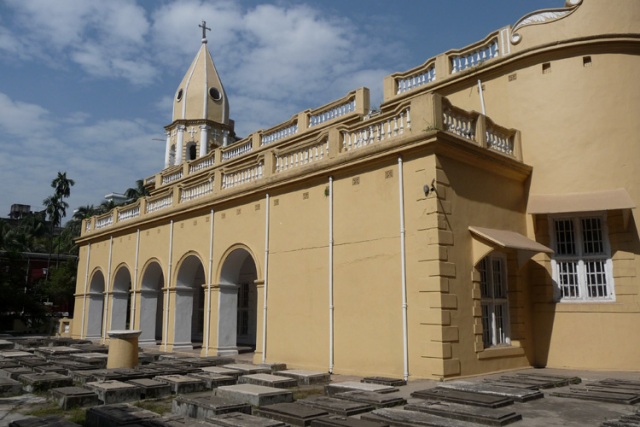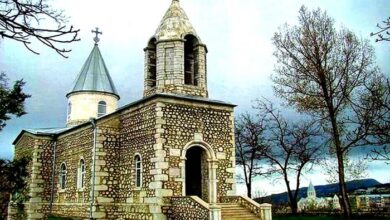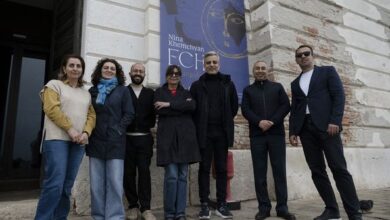Armenians in Dhaka

Through the Armenian Church of the Holy Resurrection on Church Road in Old Dhaka architect Adnan Morshed explores the Armenian history in Dhaka. Excerpts from the article published by The Daily Star are provided below:
The church is modest in its architectural scope, yet its history offers a rich tapestry of the Armenian footprint on the commerce, politics, and education of East Bengal. More important, the church is an architectural testament to the story of how the Armenian diasporas spread out from their historic homeland, located between the Black Sea and the Caspian Sea, to far-flung regions, and thrived as a versatile cosmopolitan community.

Armenia occupies a crucial geographic location at the intersection of various civilizations and trading routes, such as the Silk Road from China to Rome. A vital link between East and West, the country was under the domination of various competing political powers, including the Persians, the Greeks, the Romans, the Arabs, the Persians again, the Ottomans, and the Russians. Their long political subjugation, on the one hand, made it difficult for them to maintain their Christian faith, language, culture, and national identity. (The Armenians were the first people to embrace Christianity as a state religion in 301 CE). On the other hand, challenging circumstances exhorted Armenians to be resilient in the face of political repression, to develop entrepreneurial acumen and mediating skills, and to be a “trade diaspora.” Wherever the Armenians went to trade, they typically learned the local language – unlike other Asian or European merchants – and they benefitted from the ability to communicate with primary producers.
The Armenians also played a significant role in the history of world architecture. In the early medieval period, when the Byzantine world abandoned classical stonework in favor of brick masonry (the sixth-century Hagia Sophia in Istanbul is basically a brick construction), only the Armenians retained the knowledge of concrete work and continued the Hellenistic attitude to buildings as a compact, object-like impression in space. Their contribution had a crucial influence on subsequent development of church architecture in Europe.
There is no consensus on exactly when the Armenians arrived in Dhaka. Some historians, however, suggest that they were in Bengal in the early 17th century, most likely arriving with the southbound migration of Armenian diasporas from Persia. During the Safavid-Ottoman wars of 1603-1605, the Safavid monarch Shah Abbas (r. 1587-1629) deported up to 300,000 Armenians from the Armenian mercantile town of Old Julfa to what became known as New Julfa in the suburb of Isfahan.
Because the official language of the Mughal court was Persian, the Persian-speaking Armenians could easily adapt to the life in the Mughal Empire. Being skillful in the textile business, the Armenians naturally gravitated to Dhaka, one of the trading hubs for fine textile, contributing significantly to the city’s commercial life. In addition to textile and raw silk, the Armenians engaged in the trade of saltpeter (used as gunpowder), salt, and betel nut. They pioneered jute-trading in the second half of the 19th century and popularised tea-drinking in Bengal. When they began to lose the textile business to the British private traders in the late 18th century, the Armenians reoriented their focus to landholding, eventually becoming prominent and wealthy zamindars (or landowners). Examples of Armenian zamindars in Dhaka include: Agha Aratoon Michael, Agha Sarkies, and Nicholas Marcar Pogose.
Another major Armenian contribution to Dhaka was the introduction of the ticca-garry (or horse-carriage), which became the main mode of transportation in the city until the first decade of the 20th century. Armenians also introduced western-style department stores for European and British goods, including wines, spirits, cigars, bacon, reading lamps, shoes, toys, table cutlery, shaving soap, saucepans, frying pans, traveling bags, and umbrellas, among other items.
The Armenian community contributed significantly to Dhaka’s civic life and urban administrative bureaucracy. Nicholas Pogose founded the first private school of the city, Pogose School, in 1848. It still functions as a prestigious school in Old Dhaka. In response to Nicholas Pogose’s resolution that the Dhaka Municipality Committee had no corporate entity and that steps should be taken to remedy the problem, the British colonial administration enacted the District Municipality Act of 1864. Subsequently, the Dhaka Municipality became a statutory body with its own legal jurisdiction.
Compared to those in Calcutta and Madras, Dhaka’s well-knit Armenian community was small but wealthy, exerting a great deal of influence on local and regional businesses. The Armenians resided in Armanitola, an Old Dhaka neighbourhood that was named after their colony where they once lived (although not all Armenians lived there).
Many of Dhaka’s wealthy Armenians lived in European-style bungalows in Old Dhaka. One of the most famous was the Ruplal House (now derelict), built by the Armenian zamindar Aratoon. The religious life of the community revolved around the Armenian Church of the Holy Resurrection, built in 1781 on the ruins of an earlier chapel and cemetery. The land for the Armenian Church was originally gifted by the Armenian noble man Agha Catchick Minas, whose wife died in 1764 and is buried inside the church.
The Armenian Church stands today like a quiet and dignified monument amidst the frenzied urban growth surrounding it. Residential apartment towers dwarf its two-story structure and the belfry (or the bell tower). The oblong plan of the church is a simple basilica type with a double-height nave flanked by a pair of one-story, 14-foot wide arcades that open to the surrounding graveyard. The three-tier bell tower, capped with a conical roof, on the west provides a square-shaped and arched vestibule, followed by a ceremonial entrance to the nave.
The high boundary wall around the Armenian Church in Dhaka shields the property from rampant land speculation that characterises the capital city today. The main entrance to the site is from the east, near the circular apse. Visitors must walk through the graveyard all the way to the western forecourt of the church. Reading the tombstones of the graveyard feels like a journey back to a time when the Armenians played pivotal roles in the life of the city.








